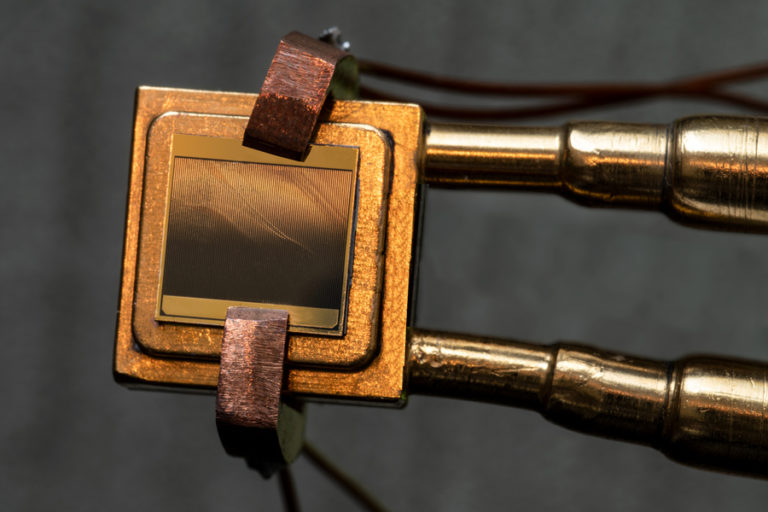From pv magazine Global
A group of researchers from the Massachusetts Institute of Technology (MIT) and the US Department of Energy’s National Renewable Energy Laboratory (NREL) has fabricated a thermophotovoltaic (TPV) cell that is able to harvest high-energy photons from a white-hot heat source and convert them into electricity.
The device is described as a heat engine with no moving parts that is able to produce power from a heat source of between 1,900 to 2,400 C. This concept is known as thermal energy grid storage (TEGS) and consists of a low-cost, grid-scale energy storage technology that uses TPVs to convert heat to electricity above 2,000 C. “It is a battery that takes in electricity, converts it to high-temperature heat, stores the heat and then converts it back to electricity by TPVs on demand,” the US group explained.
The system was built with two-junction TPV devices comprising III–V materials with bandgaps between 1.0 and 1.4 eV that were optimized for the planned temperature range and TEGS applications. These cells utilize band-edge spectral filtering to obtain high efficiency, using highly reflective back surface reflectors to reject unusable sub-bandgap radiation back to the emitter.
The scientists tested several system configurations and a thermophotovoltaic device with bandgaps between 1.2 and 1.4 eV was found to have the highest efficiency at 41.1% operating at a power density of 2.39 W cm–2 and an emitter temperature of 2,400 C. Another device with a 1.2/1.0 eV bandgap reached a maximum efficiency of 39.3%, at a power density of 1.8 W cm–2 and an emitter temperature of 2,127 C.
The thermophotovoltaic cell should now be integrated into a grid-scale thermal battery. “The system would absorb excess energy from renewable sources such as the sun and store that energy in heavily insulated banks of hot graphite,” the researchers emphasized. “When the energy is needed, such as on overcast days, TPV cells would convert the heat into electricity, and dispatch the energy to a power grid.”
The device was presented in the study “Thermophotovoltaic efficiency of 40%,” which was recently published in nature. Their work demonstrated the main parts of the system in separate, small-scale experiments and the research group is currently working to integrate the parts to demonstrate a fully operational system. “Thermophotovoltaic cells were the last key step toward demonstrating that thermal batteries are a viable concept,” said MIT researcher Asegun Henry. “One of the advantages of solid-state energy converters are that they can operate at higher temperatures with lower maintenance costs because they have no moving parts.”
This content is protected by copyright and may not be reused. If you want to cooperate with us and would like to reuse some of our content, please contact: editors@pv-magazine.com.









1 comment
By submitting this form you agree to pv magazine using your data for the purposes of publishing your comment.
Your personal data will only be disclosed or otherwise transmitted to third parties for the purposes of spam filtering or if this is necessary for technical maintenance of the website. Any other transfer to third parties will not take place unless this is justified on the basis of applicable data protection regulations or if pv magazine is legally obliged to do so.
You may revoke this consent at any time with effect for the future, in which case your personal data will be deleted immediately. Otherwise, your data will be deleted if pv magazine has processed your request or the purpose of data storage is fulfilled.
Further information on data privacy can be found in our Data Protection Policy.